Long a curiosity for people driving along the north coast between Tamsui and Keelung, the “UFO” houses as they are known locally — a group of freakish looking, brightly colored, run-down buildings that were once supposed to become a holiday village — made the headlines recently following the Taipei County Government's decision to demolish them.
Demolition work began on Dec. 29.
“We received an order to tear them down and we plan to finish the job within a month. I have no idea what will happen to the site afterwards,” said a site supervisor, who wished to remain anonymous.
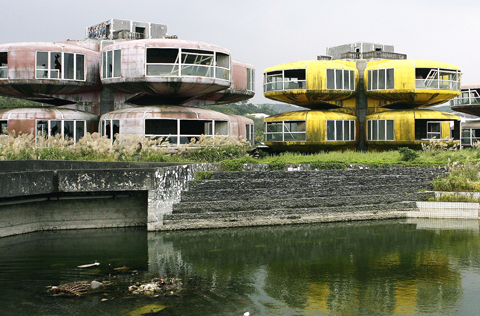
PHOTO: JIMMY CHUANG, TAIPEI TIMES
The UFO houses are situated near the 17km marker of the Tamsui-Jinshan Road (Provincial Highway No. 2). These odd, circular, frisbee-shaped houses remind many people of UFOs, hence the name. Prior to being torn down, the site was often used as a location for photographers because of its unusual atmosphere and beautiful coastal setting.
Taipei County Public Works Bureau Director Lee Shu-chuan (李四川) said that construction work on the compound was never finished and the site has been abandoned for nearly 30 years. The government had no authority to order its demolition as it was owned by the Hung Kuo Group. Hung Kuo's financial problems, however, saw the site's ownership fall into the hands of three different banks.
“We eventually made a deal with the group and decided to tear it down. Hung Kuo and the Taipei County Government will work together to rebuild the site, including the beach front, into a scenic attraction and maybe a resort for tourists,” Lee said.
One of the designers behind the UFO houses spoke exclusively to the Taipei Times. Lin, who only gave his family name, said that there were lots of rumors about the site, but most of them were false.
“First of all, the site is definitely not haunted,” Lin said, in reference to oft-heard rumors that many people have seen ghosts near the complex or the high number of unexplained traffic accidents on the nearby road.
There were also rumors that more than 20,000 skeletons were discovered at the site when construction work began and that it was the scene of several murders.
Lin said that construction of the UFOs began in 1978.
“It is traditional in the construction business to pay your respects to any spirits at the site of a new project before you start work. It had nothing to do with the ghost stories,” Lin said.
Lin, now a freelance interior designer, was working as head of the design department at King Interior Design Co, a subcontractor for Hung Kuo, back in 1989.
Lin said that the original idea for the UFOs came from Sanjhih Township (三芝) plastics manufacturer Yu-chou Co. The first construction license was issued in 1978 and the idea for the design came from Matti Suuronen, an architect from Finland (www.arcspace.com/books/tomorrows_house/), but construction stopped in 1980 when Yu-chou went bankrupt.
Lin said that Hung Kuo had just started running Taipei's Hilton Hotel in 1989 and was looking to extend its tourism business. When Tsai Chin-hsien (蔡錦賢), the president of a local beer house in Tamsui called Haichungtien, proposed continuing with the construction of the UFOs, Hung Kuo offered to back it with NT$800 million (US$24 million) and became the manager of the project.
“They planned to make the compound into a large beer house and resort,” Lin said. “When Tsai took over, he decided to hire King Interior Design Co as the subcontractor and that was when I began to be involved in the project.”
Lin said that after taking over the project, he found that each UFO consisted of a reinforced concrete construction covered by fiber reinforced plastic. Earthquakes could damage such a construction and cause leaks and there was no way to fix such problems.
“We just wanted to finish the construction as soon as possible so we did not redesign or reconstruct the remaining half-completed houses,” Lin said.
He said construction was halted at the end of 1989 because Hung Kuo and Haichungtien had different plans for the compound and failed to reach an agreement.
“Haichungtien was a local business, but Hung Kuo wanted to make the site into an international resort. Unfortunately, the two ideas just did not fit together,” Lin said.
In 1995, Hung Kuo used the land to get loans from three banks because of financial problems, and the compound was left in its present state.
But the site will not lay derelict for much longer, it seems.
The Taipei County Government, according to Tourism and Travel Bureau Director Chin Hui-chu (秦慧珠), now has clear plans for the reconstruction of the site.
“With help from the Sanjhih Township Administration Office, we are planning to turn the site into a real tourist attraction by constructing hotels, beach facilities and more,” Chin said.
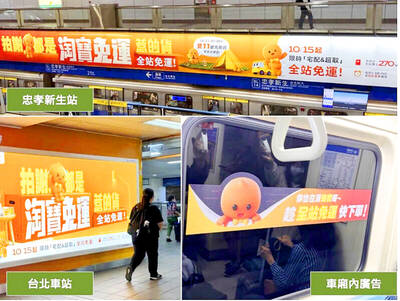
The Ministry of Economic Affairs has fined Taobao NT$1.2 million (US$36,900) for advertisements that exceeded its approved business scope and ordered the Chinese e-commerce platform to make corrections in the first half of this year or its license would be revoked. Lawmakers have called for stricter supervision of Chinese e-commerce platforms and more stringent measures to prevent China from laundering its goods through Taiwan as US President Donald Trump’s administration cracks down on origin laundering. The legislature’s Finance Committee yesterday met to discuss policies to prevent China from dumping goods in Taiwan, inviting government agencies to report on the matter. Democratic Progressive Party
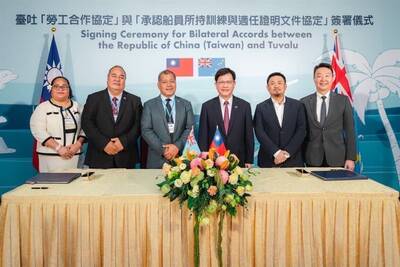
Taiwan and its Pacific ally Tuvalu on Tuesday signed two accords aimed at facilitating bilateral cooperation on labor affairs, according to Taiwan’s Ministry of Foreign Affairs (MOFA). The governments inked two agreements in Taipei, witnessed by Foreign Minister Lin Chia-lung (林佳龍) and visiting Deputy Tuvaluan Prime Minister Panapasi Nelesone, MOFA said in a news release. According to MOFA, the agreements will facilitate cooperation on labor issues and allow the two sides to mutually recognize seafarers’ certificates and related training. Taiwan would also continue to collaborate with Tuvalu across various fields to promote economic prosperity as well as the well-being of their
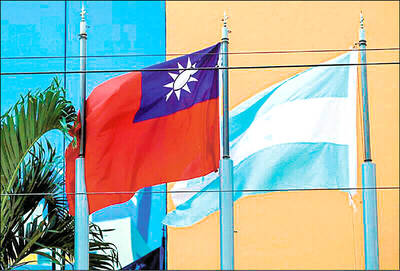
Taiwan would welcome the return of Honduras as a diplomatic ally if its next president decides to make such a move, Minister of Foreign Affairs Lin Chia-lung (林佳龍) said yesterday. “Of course, we would welcome Honduras if they want to restore diplomatic ties with Taiwan after their elections,” Lin said at a meeting of the legislature’s Foreign Affairs and National Defense Committee, when asked to comment on statements made by two of the three Honduran presidential candidates during the presidential campaign in the Central American country. Taiwan is paying close attention to the region as a whole in the wake of a
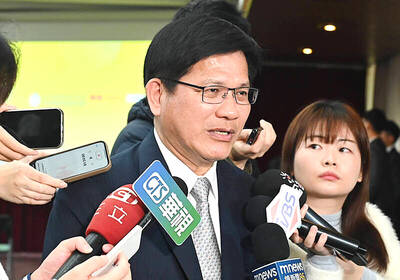
NEW WORLD: Taiwan is pursuing innovative approaches to international relations through economics, trade and values-based diplomacy, the foreign minister said Taiwan would implement a “three-chain strategy” that promotes democratic values in response to US tariffs, Minister of Foreign Affairs Lin Chia-lung (林佳龍) said. Taiwan would aim to create a “global democratic value chain,” seek to capitalize on its position within the first island chain and promote a “non-red supply chain,” Lin was quoted as saying in the ministry’s written report to the Legislative Yuan submitted ahead of the legislature’s Foreign Affairs and National Defense Committee meeting slated for today. The Ministry would also uphold a spirit of mutual beneficial collaboration, maintaining close communication and consultations with Washington to show that Taiwan-US cooperation